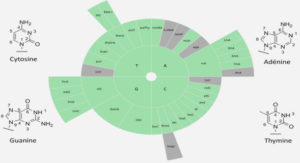Racism, Injustice and Resistance in I know Why the Caged Bird Sings
BLACK PEOPLE’S HARDSHIPS
In Stamp Arkansas, where young Marguerite and a brother Bailey come to live, the place is so affected by racism that even the two young children notice it. Marguerite for example, at the beginning when she sets her feet in the area, cannot accept her own color. She despises herself because she hates her black skin and the way she looks. On Easter, she thinks that with her new cloth, she will looks like white and more be beautiful than she is. She also thinks that sooner or later her real self will appear and that the people around, the blacks who use to tease her about her ugly feature, will come and ask for forgiveness. So in this passage, Marguerite, who is a four years old, is really very affected by racism .She despises her black skin, hates her slang accent and refuses to believe that she is black .She thinks that black is bad, awful and repugnant and that sooner or later she will appear with her white skin and everyone will be very surprised. Marguerite is so deeply affected by racism that she even relates that. She was really white and a cruel fairy step mother, who was understandably jealous of her beauty, had turned her into a big Negro girl, with nappy black hair broad feet and a space between her teeth that would hold a number two pencil. She even thinks that God is white and that white people cannot be real people. White people are not like blacks. According to Marguerite, the blacks, more precisely the cotton pickers are very dirty, poor, and insolent. And as for the white folks, they are nice, kinds, rich, and civilized. She thinks that white people are not simple beings that but they are more than this. And as for the blacks they cannot be human beings but less than this. So for Marguerite they cannot be compared because they are not the same. At this age, the only thing that occupies her mind and all her dreams will be able to start enjoying her real self. She imagines that day, how happy and wonderful she will be among the blacks who think that she is a black. She also thinks and imagines how the blacks, the cotton pickers, will all run towards her and praise her and ask pardon for things that they have done to her. 6 Besides that she puts in her mind that, at that very day, people will know who she is really, and they will all admire her for her white skin. So that is why she notices that people ` … would not they be surprised when one day I woke out of my black ugly dream , and my real hair which was long and blond , would take place of the kinky mass that Momma would not let me straighten ? My light blue eyes were going to hypnotize them, after all things they said about me. my Daddy must have been a chainman (I thought they meant made out of china, like a cup) because my eyes were so small and squinty. Then they would understand why I had never picked up a southern accent or spoke the common slang. And why I had to be forced to eat pig’s tail and snouts. Because, I was really white …1 So Marguerite who is nothing but a very young girl that feels that even though she was black at her age, that later, her real identity will be out and those who know her will be very surprised and admire her. Moreover in this passage, it is important to notice how black people are affected by racism; even the very young children are not saved. Because the case of Marguerite shows that many black southerners live innocently, they do not know exactly who they are and what are their real identities. In their daily living, many blacks think that all is white is beautiful and wonderful, and that everything that is black is linked to the bad, awful and not meaningful things. So the idea of complexity entered black people’s lives and deeply affected them. This affected their ways of living and even made them to believe that they are inferior to the whites. For example, the white people have been blacken the names of the blacks folks for centuries and that the idea of back color is so belittled and minimize that everything that is black, is taken as bad things.
WHITES MISTREAT BOTH BLACKS AND CAJUNS
In Of Love and Dust, the author depicts through the narration of his main character James Kelly, a history in which black and Cajun live both under the white supremacy. Mr. Hebert the owner of a south Louisianan plantation imposes some strict rules on all of them. As for his overseer, Sidney Bonbon, he drives the black workers mercilessly, he makes them to work very hard and does not hesitate to treat them like animals .In the south Louisianan plantation, blacks and Cajuns live under the control of 26 their white racist boss. In order to better cement his power around the area, he invents some strict laws on the plantation. On the plantation blacks and Cajuns are limited in their duties and they strongly follow Hebert’s rules. For example in the Louisianan area love between races is banned by the boss of the plantation. A black has not the right to love a Cajun and a Cajun has not the right to love a black too. Any relationship between them is not allowed by Mr. Hebert. He imposes these laws to better secure himself, because he is afraid that blacks and Cajuns befriend or have children between them and that these mix bloods will turn him down one day. That is why all around the plantation, he has eyes on the Cajun community and the black one. Besides the strict laws that he imposes on the black and Cajun communities, Mr. Hebert has done awful acts between him and his workers. In Louisiana, to better handle his plantation, he divides the area into two parts. The first one is composed by the Cajun overseer and the second one by the black workers. Mr. Hebert takes the Cajun overseer as his intermediary between him and the black workers; it is through the latter that he communicates with the blacks. So in the Louisianan society, it is a kind of ladder, the white boss is at the top, at the middle is the Cajun, and down the ladder there is the black. Mr. Hebert takes Sidney Bonbon as his second hand in the area, and everything that he wants to do he does not hesitates to give it to Bonbon. So not only does he give him the plantation and all the blacks under his control, but sometimes, he gives him some horrible jobs to do. For example in Louisiana, he orders Mr. Bonbon to kill for him. One day, Mr. Hebert brother’s Bradford who was as the bishop relates: He was a gambler, a big gambler, but he used to lose much more than he ever won. One night he lost a great deal more than he could ever pay back. He signed a letter to the man who had won the money, then he came home and packed up his clothes and left. Nobody knows where he went and nobody knows if he is living or dead. A week or so after him left, the other man showed up with the letter, claiming his money. I heard him and Mr. Marshall squabbling over the money in the library. He left without getting 27 the money, and a few weeks later he was killed in a saloon – another gambler killed him. The place was packed full of people and there was nothing but noise on, the second man was killed, too. Bonbon where there that night. People figure he killed the second man after he had put him up to kill that other one .13 He considers his overseer as a tool that he can use whenever he wants. He makes him to control the black workers mercilessly and in turn, he makes him kill two people. With these horrible acts, all the people in the area know that Bonbon is just a tool and that the boss is using him whenever he wants. He uses him on the plantation with the black workers; he uses him around the fields for his enemies too. So we can say that everything that Bonbon does in the plantation is dictated by his boss. He is the one who treats the plantation workers bad. He is the one who kills, but, everybody knows, that it is Hebert who is responsible for all of his acts. In addition to these terrible deeds, Mr. Hebert had a bad past with the old blacks in the quarter. In the quarter, many old blacks used to work for the Hebert‘s family, they had worked for two or three generations. And whenever they can no longer serve , the boss put them aside to find new fresh hands .For example Pa’ Bullie , Aunt Margeret , Sun Brown , Aunt Ca’Line , Miss Jolie Rand etc.. All used to work for the Hebert family, but when they grew old, he threw them away like rubbish. For instance, Marcus’s grandmother Miss Julie Rand had worked for the Hebert’s for forty years and when Pauline came, she was thrown away. Marcus’s grandmother had dedicated her whole life serving the Hebert’s but when she was no longer needed, they changed her for another one. The Hebert‘s family does not even care for all the sacrifices that she has done. The only thing that interests them is the present. They consider the black workers as not human beings, they use them and when they finish they throw them away like animals. After being used for more than forty years, the former plantation workers are let in the quarter without any help, as for Marcus grandmother, after being fired from her job, she went to settle in Baton Rouge with her family
Dedication |





